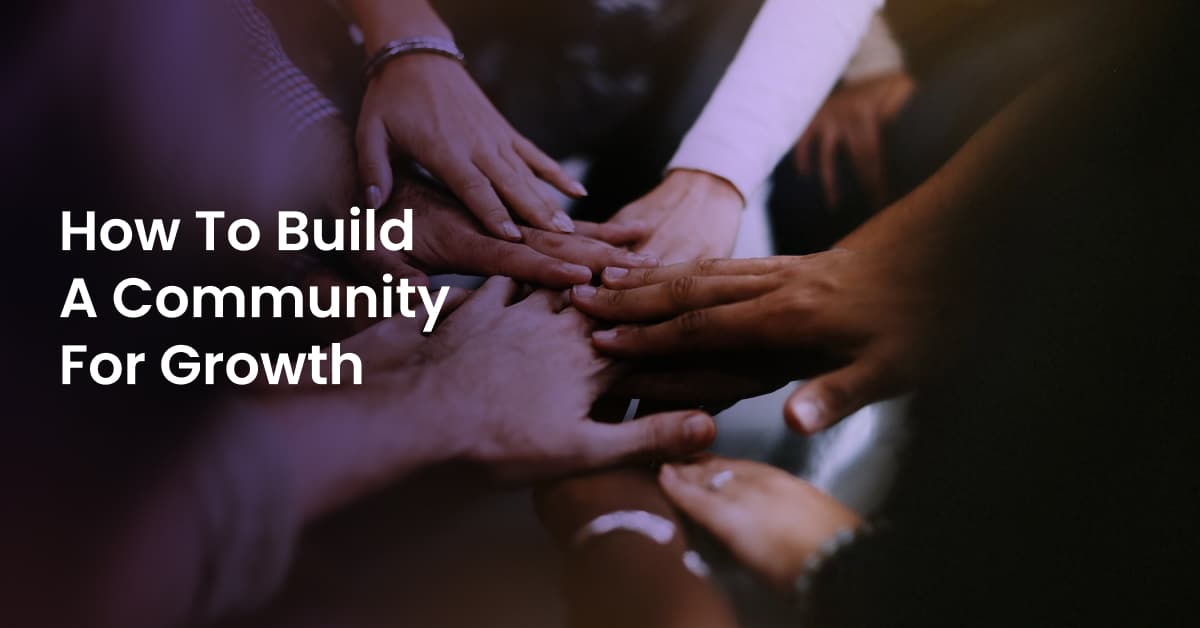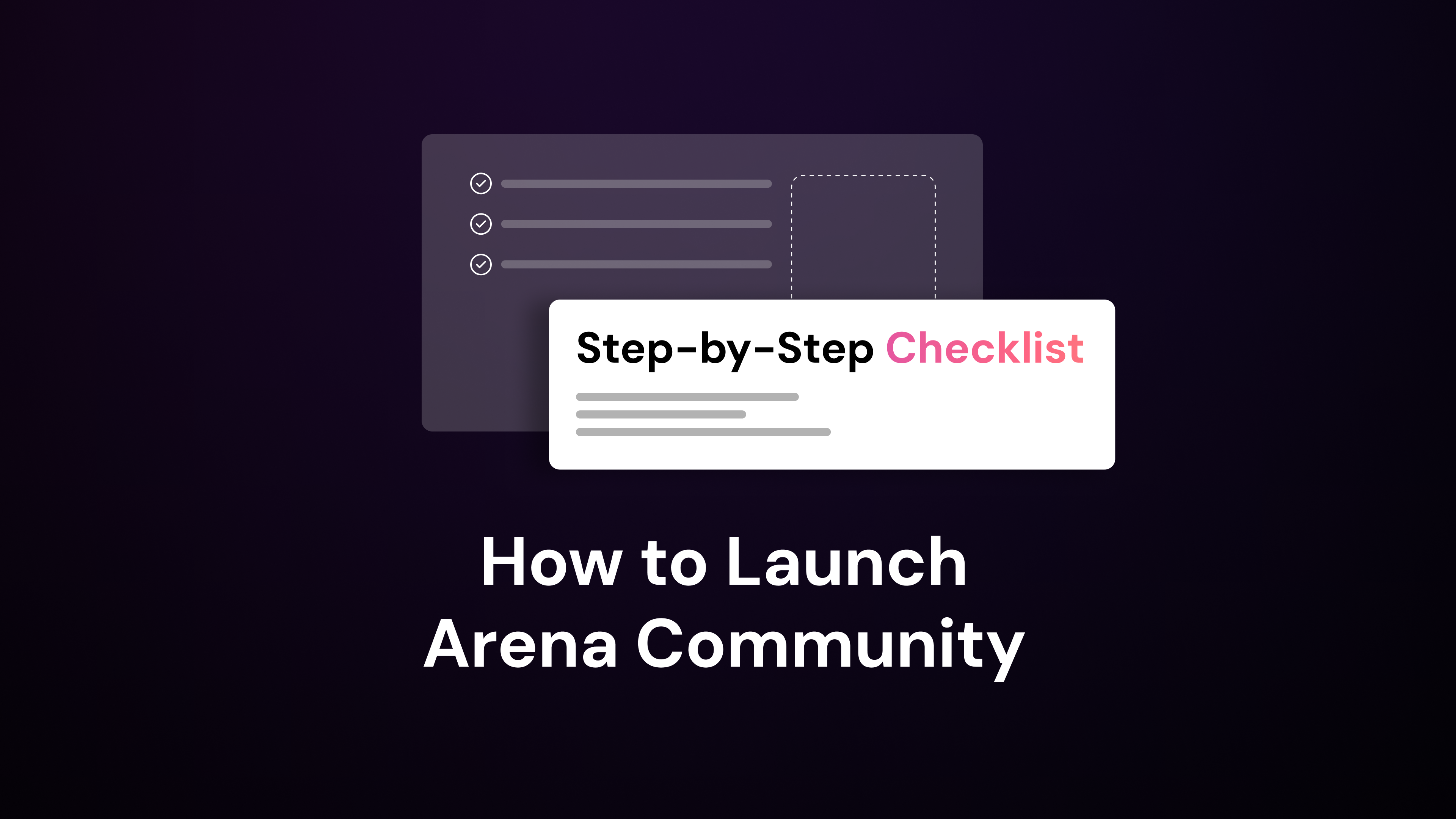Using a community flywheel for growth is a powerful way to convert more customers and keep your customers longer. The community mindset has the potential to supercharge growth. It takes significant effort, but don’t let that discourage you. You’ll gain a lot of benefits from fostering and growing your online community hub.

What Are The Key Elements to Building a Community Flywheel?
There are five elements to a thriving community flywheel, according to management consulting firm McKinsey & Company.
Understand Your Market
The foundation of a successful community is understanding what your customers value and the communities they currently participate in.
Identify Your Hero Products
Community-building efforts have the best chance to succeed when focused on one or a few products. For companies with a more extensive product portfolio, focus on the products that have won the most traction in terms of loyalty, reviews and engagement.
Tell Interesting Stories About Your Hero Products
The next part of building a community flywheel focuses on social proof. Specifically, reach out to your customers to ask them for feedback. Shining a spotlight on your happiest customers sets the tone for your community.
Fuel The Community With Content
Great products aren’t enough to build thriving digital community hubs. You also need to offer engaging content that answers questions, solves problems, and entertains your audience. This part of the flywheel can also leverage user-generated content (UGC).
Make Buying Easy
The final piece of a successful company is making buying easy. For consumer brands, draw inspiration from Amazon’s one-click ordering. For complex B2B sales, look for sales to simplify the buying process. For example, offering a free trial of your software is powerful because it lets users experience how the product directly.
Community-Led Growth Success Stories
Seeing the value in community-powered growth is easier when you can see tangible results. Several brands have leveraged communities for growth.
Gymshark: Community Growth In Fitness

Founded in 2012, this British fitness company offers workout clothing for athletes and gym enthusiasts. While clothing sales lie at the heart of the business model, the business has also launched a fitness training app. Gymshark has a natural advantage in building a community. Many of its customers regularly pursue fitness goals like weight loss, increased strength, and athletic performance. The company also has a significant and highly active community social media following on Instagram and Facebook.
Gymshark also demonstrates practical ways to work with influencers to create content around your brand. The company started with a simple outreach campaign to Chris Lavado and Lex Fitness, fitness influencers on YouTube. With this approach, the company effectively inserted itself into existing fitness communities.
Notion: Productivity Community Drives Growth

Notion is a digital organizing tool where individuals and teams can track projects, goals and stay organized. Notion’s success at online community building is remarkable because they are entering a crowded space of productivity and organization tools. The sheer variety of the community’s engagement options is a crucial reason for its success.
The Notion approach to the community includes both official and unofficial community options. Die-hard enthusiasts can become Notion-certified consultants – there are dozens as of November 2022. In addition, the company has an ambassador program and campus program where enthusiasts can gather together.
The informal community options are even more significant. For example, the company lists digital and in-person events and gatherings in Sydney, the University of Tampa, Brazil, and Portland, OR. Further, Notion has both “interest-based groups” on topics like Notion for Students, Marketing & Notion, and language-based groups (e.g., Notion in French, Notion in Spanish, etc.).
These online community growth stories illustrate how you can bring your customers into your growth journey.
Ways To Ignite Your Community Flywheel
1) Invest In Case Studies and Customer Stories
Producing high-quality customer stories is a foundational element in fostering community-led growth. These marketing assets are powerful because they bring together your product and the value customers experience using it. Use the following tactics to gather customer stories.
Ask Sales For Happy Customers
Customer studies are most compelling when they focus on people who are delighted with your product. Asking the sales team to build a list of delighted customers is a great way to start the outreach process. Sales and marketing should work closely together to create a list of 10 customers to interview for social proof.
Review Product Analytics For Engaged Customers
For digital companies, there’s another way to find your best customers. Look at your analytics platforms to find your most engaged users. For instance, a news publisher might start by creating a list of all their paying subscribers and then refine that list by looking at people who log in to the website multiple times in the past 30 days.
Give Your Customers Options To Contribute Their Stories
The first two tips will help you create an interview outreach list. Since you are asking customers for their time and attention, it’s essential to be flexible. If possible, aim for a live interview over video so that you can ask clarifying questions and dig deeper into the answers. If the customer isn’t interested in a video call, consider using an email interview or survey instead.
Once you have your case study ready, contact the customer to get their approval before you publish it.
In addition, pay attention to the online chat events you host with Arena Live Chat. If you notice particularly positive and engaged customers in chat, send them a private message to ask if they would be interested in a case study interview.
2) Build Your Content Foundation
Engaging content is critically important to building your audience. There’s no single definition of engaging content, so let’s look at a few approaches to it.
Instructional Content
Content that teaches a person how to solve a problem or use a technology or skill is incredibly popular. It’s easy to assume that people know how to use your product effectively. In the consumer market, beauty brands like Credo Beauty and Estee Lauder on YouTube have created instructional videos and posts. In the enterprise market, Microsoft and Cisco have created significant libraries of technical content designed to help their audience.
Reach out to sales and customer support colleagues for instructional content ideas. Any question that your organization receives multiple times may be a good fit for instructional content.
Satisfy Search Intent
Finding underserved search queries is an important search engine optimization skill. Finding these searches and creating content that satisfies those interests is worth the effort. Start by using your SEO software to identify questions or comparison search-based queries.
Entertainment
Entertaining content isn’t a fit for every brand. If you can find a way to leverage humor in short TikTok videos or other formats, it will help you to gain an engaged audience. Creating successful humor that aligns with your brand is an art. In many cases, it’s best to use comedy and entertainment to spice up other forms of content.
Unique or Exclusive Content
Creating genuinely unique content takes substantial effort. For example, look at Buffer’s State of Remote Work survey. This resource takes months of planning, research, and creation. Over time, Buffer has earned a substantial amount of backlinks and attention. Ask your team what unique data you have and create content around that.
You can also create unique content by curating the best content online. For example, you can use Arena Live Blog to pull in the best social media content around a breaking news story.
3) Borrow Audiences With Influencer Strategies
There are few real shortcuts to building an engaged audience. One of the few proven options is to borrow an audience from somebody else. One of the best options is to reach out to social media influencers for promotion. For example, you can send your product directly to an influencer and ask them to review it.
4) Use Niche Strategies
Some niche community-building strategies work well in certain circumstances.
For example, many B2B brands create certification programs and training courses to help power users show off their expertise. For inspiration, look at companies like Salesforce, Cisco, and Microsoft, which have long offered certifications. Creating a meaningful certification program usually means creating a challenging exam, training content, and ways for credential holders to promote their achievement.
Does your company have an interest in younger people? Creating a college ambassador program might be a great way to focus community. This might start with offering a discounted price to students. You might also create free resources for students as well. Apple has long had a highly successful ambassador program for education. Offering a tangible benefit like a summer job, discount, or something else is an excellent way to spark this type of community.
Make Your Website The Heart of Your Digital Community
Building communities around the web and offline is all worthwhile. However, it’s difficult to deeply understand social media followers because you don’t have any first-party data about them. As you attract more and more people to your website, ensure it is interactive and engaging. Learn more about how Arena can help you build social communities under your control.



